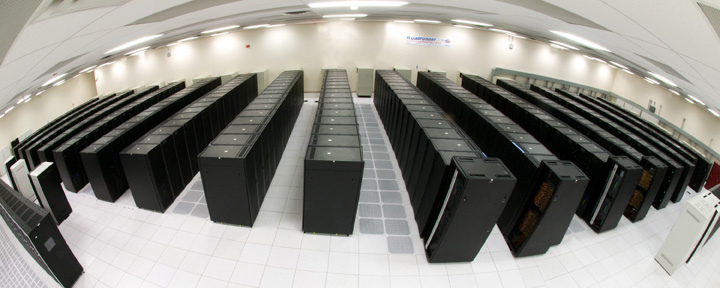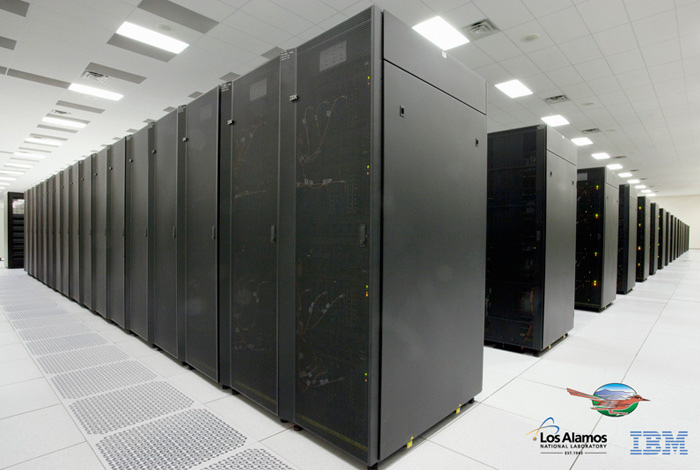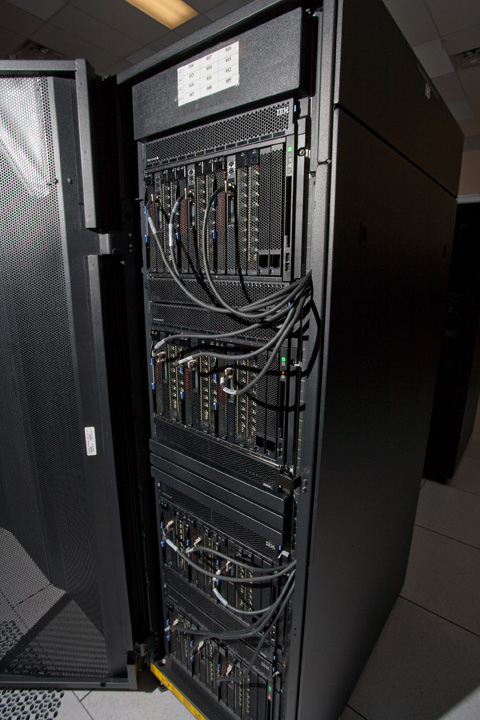The most powerful supercomputer in 2009 gives way to a new generation

The time has come for the world's best supercomputer in three consecutive Top 500 rankings for June 2008, November 2008 and June 2009 to give way to the next generation of supercomputing systems. Although IBM Roadrunner is ranked 22nd in the world with a productivity of more than 1 petaflops, the owners decided to take it apart due to the complexity of its maintenance.
The supercomputer was written off yesterday, March 31, 2013. But in the near future, students will still be experimenting there.

')
A press release from the Los Alamos National Laboratory states that a “unique and controversial” architecture was chosen for IBM Roadrunner. It combined two types of processors: 6563 ordinary-use dual-core CPUs (AMD Opteron), where each core was connected to a separate PowerXCell 8i processor, an improved version of those processors that are installed on the Playstation 3.
The unusual architecture of the supercomputer was reflected in its power consumption: Roadrunner consumes 2,345 kW for its 1,042 petaflops. For comparison, the supercomputer occupying the 21st place in the Top-500 consumes 1,177 kW, and slightly lower than No. 23 - only 493 kW at all. The cost of 2.3 megawatts of electricity is not such a large amount, if you count at the tariff of 5.56 cents per kilowatt-hour for industrial enterprises in the state of New Mexico for 2012.
But the main problem is not the cost of electricity, but rather the complexity of maintenance and writing programs for hybrid architecture. The hybrid architecture experiment was valuable in itself.
The point is also that the Los Alamos National Laboratory wants to make a new supercomputer 10-50 times faster than the old one and come back to the top of the Top-500 rating. This requires additional resources that were involved in the support of IBM Roadrunner.
The IBM Roadrunner supercomputer is installed at the Los Alamos National Laboratory of the US Department of Energy. This is one of two laboratories conducting work on nuclear weapons. In addition to nuclear weapons, IBM Roadrunner, during its four and a half years of work, helped to carry out many other experiments. For example, it simulated the properties of nanowires, laser backscatter (laser backscatter), magnetic reconnection, the phylogenetics of the HIV virus, and even a model of the Universe on a scale of 70 billion objects.
The cost of IBM Roadrunner at the time of assembly was $ 120 million.

Source: https://habr.com/ru/post/174929/
All Articles